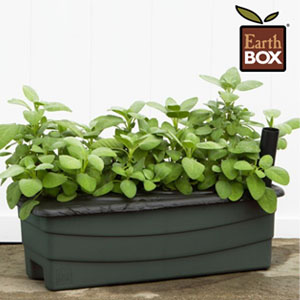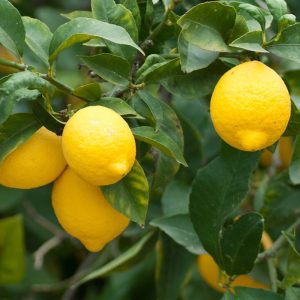Citrus & Fruit
You may also be experiencing fruit drop on citrus. This is common as citrus have three times per year when they may shed a few fruits early. Once, immediately after flowering in spring, June and again in fall. The tree will sometimes shed a few fruits if it has too many to support. With a lot of rain, you may also have some fruit splitting – this is caused by more water than the fruit can hold. If you have trees (like lemons for example) that are overloaded with fruit and in peril of breaking, remove some fruit to prevent this from happening.
We often get asked this time of year whether citrus trees should be pruned. Citrus does not need to be pruned however, pruning mature trees will reduce the fruit yield proportional to the amount of foliage removed and can delay fruiting of young, nonbearing trees. Peach, plum and nectarine trees should be pruned however. Pruning allows for more annual vegetative growth to maintain vigor and maintain fruit production. Peach trees should be “bowl” shaped with no main leader. All fruit trees should be trimmed early- 4 weeks after petal drop when the fruit is the size of marbles.
We also get asked why some of the peel on the fruit has turned brown. In many cases it is caused by rust mites feeding on the peel in the summer causing a russeting of the peel. The interior of the fruit is not affected. Likewise, if your fruit has black sooty mold on it as a result of aphids or scale- simply wash the fruit and enjoy!
Do not let grass and weeds grow close to the trunk of citrus or any fruit tree. This will hold moisture around the trunk and encourage the attack of a fungus called “foot rot”. It can kill a tree. In addition, weed trimmers around trunks of any tree (especially fruit) will cause irreparable damage. Best to give fruit trees a nice wide area around them free of mulch, grass and vegetation.
Bananas: The best strategy for growing bananas in this part of the world so the plant will grow and produce faster is to religiously remove all suckers. Concentrate all energy into one stem. Cut the suckers off or dig them up. Let one stalk grow and it will produce better quality and larger bananas. When this stalk produces it will be the end of it and next year do the same with a new stalk that forms. Bananas have zero frost tolerance and don’t fare well in high wind either.
Decidious Fruit: Prune your deciduous fruit trees.
Peaches & Nectarines: The best fruiting wood is pencil width and one year old so prune to keep wood small and young. Peaches and nectarines require heavier annual pruning than other stone fruit as they bear solely on the previous season’s growth. Once a lateral has borne fruit it will never fruit again. Each year old growth needs to be replaced with new growth to prevent branches from becoming long, willowy and productive on the tips only. New growth should be pruned in early to mid-summer and the remaining pruning- right after harvest.
Plums: Plums fruit on semi-permanent branches as well as on old wood so only prune plum trees after harvest to shape- if desired.
Apples: Prune young trees (up to 10 years) lightly. Prune older trees more vigorously. Thinning-out cutting is associated with increased apple flower bud production.
Blueberries: This area can grow both Rabbiteye and Southern Highbush. Rabbiteye are easier to grow in general and have higher chill requirements however ripen later (May to July). Southern highbush have earlier ripening (April to May) and tend to be less vigorous and more difficult to grow.
*Grow blueberries in pine bark and peat moss only and use an Acid Fertilizer for them- frequent doses of light application.
Vegetables and Herbs
Vegetable gardeners LOVE the fall planting season with the cooler weather. ‘Up North’ you have one season, spring to fall when you plant everything. Here in Florida, we have two main seasons with spring being the warm season vegetables like Summer Squash, Zucchini Squash, Watermelon, Cantaloupe, Tomatoes, Corn, Bell Peppers, Egg Plant and more. By the time July and August arrives most have had it with the heat and extreme sun and begin to decline. July and August are good for Okra, Field Peas, and Pumpkins. Vegetables that prefer the mild Florida winter growing season are Cabbage, Lettuce, Broccoli, Brussels Sprouts, Cauliflower, Beets, Radish, Collard Greens, Mustard Greens and Spinach. If you get an early start by September or early October many vegetable gardeners can get in another crop of Tomato, Pepper, Squash and Eggplant before the cold weather arrives. Earthboxes or even a 5 gallon bucket will do the trick to plant vegetables in. You do not even have to be an avid gardener to have great success with growing and producing delicious fresh vegetables. Whether its tomatoes spring and fall or mixed lettuce in winter, an Earth Box or any container will provide all you need!

Some herbs will begin arriving in the Garden Center soon and fall is the perfect time for them! Consider planting them in pots if ground planting is not an option. Group pots of parsley, thyme, rosemary, oregano, and basil together close to your door for easy access! Herbs love the colder weather too (except basil-protect it). If any of your herbs survived the summer heat, groom them and feed them. Then add herbs like basil, chives, dill, fennel, oregano, sage, parsley, and thyme
